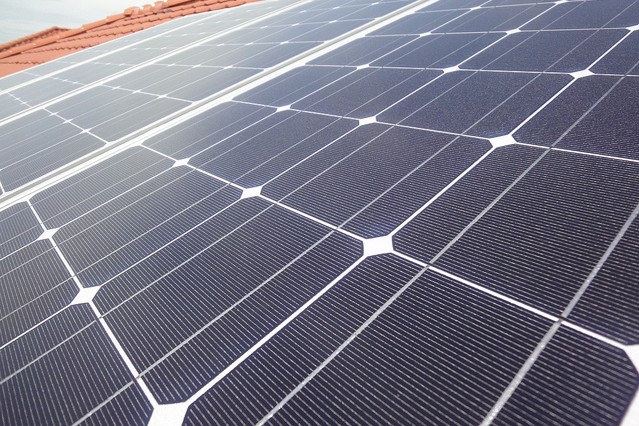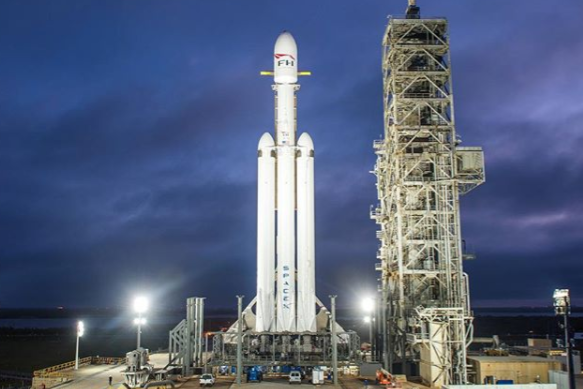This week we’ve got news on the static fire of the Falcon Heavy, two (more) ways Trump is screwing up, and the latest developments in the scientific quest to “break the vacuum” and prove Einstein right once again. It’s the top of the science and technology news for Sunday, January 28, 2018.
Falcon Heavy
After a number of delays, SpaceX has finally performed the static fire for its Falcon Heavy rocket, the final test before it can be launched. There are a lot of tests a rocket engine undergoes at SpaceX, from the independent test firing of each engine at McGregor, to the testing of each core once they’ve been assembled into their octaweb formation, to the so-called Wet Dress Rehearsals in which the cores are fueled and the teams practice all the launch procedures. But the Falcon Heavy’s static fire test was the first time the new rocket’s 27 engines had all been fired at the same time, and it produced a cloud of steam many times higher than the 70m rocket itself. According to Elon Musk, we now have a NET launch date for the very first Falcon Heavy—February 6, with a back up of February 7—and the rocket community is buzzing. If it doesn’t explode (and it really could) it’ll be the most powerful rocket currently available on the planet. That is, until the BFR comes online sometime in the next five to ten years. If you want to follow along with the latest news as the day approaches, check out r/spacex’s FH Demo Campaign thread, and if you want so see some great footage of the test fire (and learn more about the process of rocket testing at SpaceX) watch the video below by the Everyday Astronaut (and subscribe to his channel!)
Oh, and in a bit of strange, Elon Musk-related news, he’s now apparently selling… uh… flamethrowers. For The Boring Company, his tunnel digging startup. It’s… I don’t even know if it’s a joke, but I think maybe it’s both real *and* a joke.

Things Trump’s Screwing Up
US President and goldfish in a ridiculously long necktie Donald Trump this week announced two new policy directions that are going to piss off readers of this blog. First, he announced a trade protectionist 30% tariff on imported solar panels, supposedly to help US solar cell producers but which will certainly hurt the solar jobs sector in the country. The US-based company SunPower has already reacted by putting a $20 million expansion on hold, meaning there are a few hundred solar jobs that are already not going to materialize thanks to the tariff, and it hasn’t even been a week. If that weren’t enough, he’s also formulated a budget that would end US upkeep payments for the International Space Station by 2025, which would be a fairly significant setback for US orbital science given that we have no plans yet underway to replace it. There’s been talk about shifting US efforts to cislunar space, leaving low Earth orbit to private ventures like Bigelow (with their inflatable orbital modules), but as yet the cislunar plan hasn’t even been written. The only saving grace here is that Congress seems to have fairly bipartisan support for space right now, and will likely revise this as a part of the budgeting process. I guess we’ll see how it goes.

Breaking the Vacuum
There’s a race underway around the world to prove one of the elements of Einstein’s theories linking mass, energy, and spacetime, and it involved building a laser so powerful it can seemingly make something from nothing. AAAS Science Magazine is reporting that a team in China is leading the way, with a 10PW burst scheduled for this year (that’s 10 petawatts, or 10 million billion watts, “more than 1000 times the power of all the world’s electrical grids combined). This is achieved, of course, through forcing a whole lot of energy into a very, very short space of time, not by causing brownouts around the world. The idea is to be the first to “break the vacuum,” essentially performing the reverse action of a nuclear weapon: instead of turning mass into energy, it would put so much energy into one space that matter results, in this case electrons and positrons. Which, I have to admit, is totally unbelievable and I can’t wait to hear that it’s happened. The US is, unfortunately, not exactly leading the way, and sits behind the Chinese team and a separate Russian team in designing facilities that could perform the feat. Still, it’s an ambitious and exciting attempt, as just developing the technology could lead to other technological developments (like tabletop particle accelerators, for instance). You can read all about the technologies (and funding hurdles) over at AAAS Science Magazine.
And that’s the top of the news for this week. Check back next time for more!
***
Thanks again for reading. Except for the very *very* occasional tip, we only get paid in my own (and your) enthusiasm, so please like This Week In Tomorrow on Facebook, follow us on Twitter @TWITomorrow, and tell your friends about the site!
If you like our posts and want to support our site, please share it with others, on Facebook, Twitter, Reddit — anywhere you think people might want to read what we’ve written. If there’s something you think we’ve missed or a story you’d like to see covered, drop us a line! Thanks so much for reading, and have a great week.
***
Richard Ford Burley is a human, YA author, and doctoral candidate at Boston College, as well as Deputy Managing Editor at Ledger, the first academic journal devoted to Bitcoin and other cryptocurrencies. In his spare time he writes about science, skepticism, feminism, and futurism here at This Week In Tomorrow.

